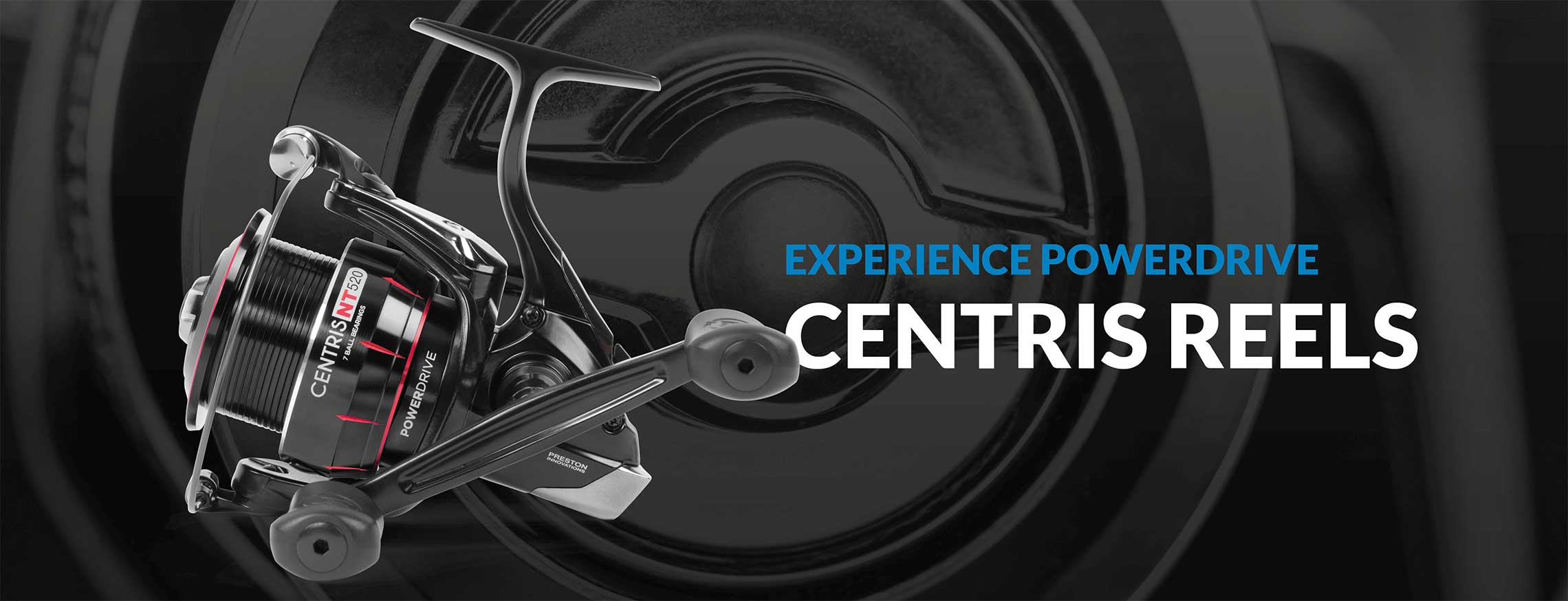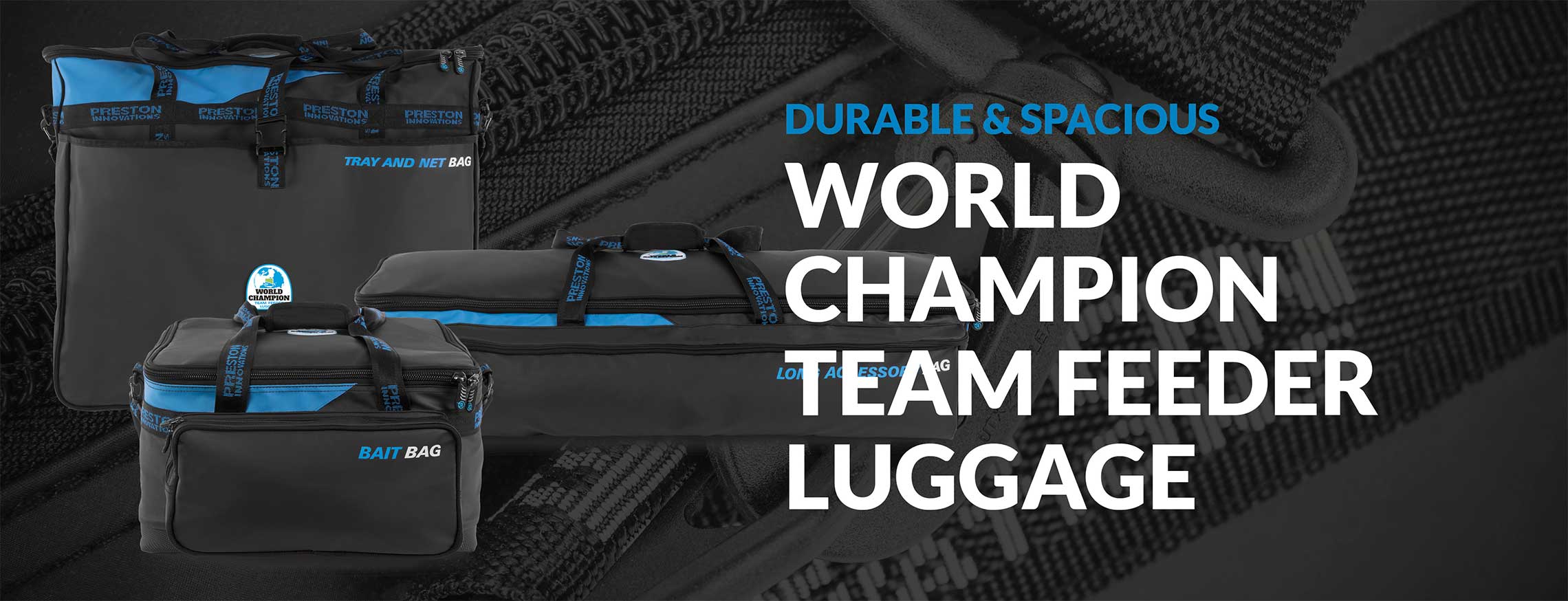Trouble Shooter - Lee Kerry
Share the Trouble Shooter - Lee Kerry article:
Partager
The Angler:
Rick Taylor is a 39-year-old engineer from Brighouse. He has fished on the northern canal circuit for years but comes unstuck during the winter months when bloodworm and joker often dominate.
The Problem:
Rick is more than capable of catching reasonable weights of fish on canals. However, he regularly seems to fall a few ounces behind and is hoping that his day with Lee will fine-tune his feeding and presentation to help put those extra fish in his net.
The Star:
Lee Kerry has gained a reputation as being one of the best bloodworm anglers in the country. He’s recently won the Thorne individual league on the Stainforth & Keadby Canal for the second time in three years and is a key member of the Barnsley Blacks squad.
Who better to solve Rick Taylor’s canal bloodworm-and-joker problems than Lee Kerry?
Bloodworm-and-joker fishing is actually one of the simplest methods of angling. It usually involves catching lots of small fish very quickly and requires a very positive approach. Here on the ‘Stainy’, high-profile matches see some of the country’s best bloodworm anglers competing every week, and there’s often only a few ounces separating the top runners.
Many will catch between 8lb and 10lb but to catch that extra matchwinning amount you have to be on the top of your game for the full five hours. One quiet spell or mistake can break a run of fish and inevitably cost you the match.
We’re at the section opposite Stanilands Marina, where I’m hoping that I can help Rick become more precise with his feeding and show him a few tricks regarding presentation that will make all the difference.
 Crucial Depths
Crucial Depths
I can see straightaway that Rick is a capable angler. He’s taken care to ensure that everything is neatly laid out around him, making sure the things he needs are to hand. However, when I ask him to plumb up, he picks up the smallest plummet I’ve ever seen! Plumbing up correctly is crucial on all canals and a heavy plummet helps get a solid, accurate reading. Another thing that I’ve noticed is how Rick has shipped out to 13 metres and lowered his plummet straight in here. Although this is usually a good line on this canal, it’s very important to find the correct area to fish and not simply pick a distance and plumb up there.
I demonstrate exactly how I plumb up, by finding the deepest water down the central track before coming out of this by a float length up the near and far shelf. The bottom in the central track is very soft and silty and lots of rubbish gathers at the bottom of these slopes. By coming just out of this area you can fish on a harder, clean bottom, on a gentle slope that’s easy for fish to feed on.
 After heeding my advice, Rick settles on two swims. The first corresponds with him holding the joint of his No6 and No7 sections, while the main swim is at 12 metres, also where two sections join. By holding the pole on a joint in this way, you can feel the section join on the way out and lower the rig in exactly the same spot every time without even looking. I also try and plumb up in some dark water or a shadow. This is simply for ease of seeing the float in the poor winter light.
After heeding my advice, Rick settles on two swims. The first corresponds with him holding the joint of his No6 and No7 sections, while the main swim is at 12 metres, also where two sections join. By holding the pole on a joint in this way, you can feel the section join on the way out and lower the rig in exactly the same spot every time without even looking. I also try and plumb up in some dark water or a shadow. This is simply for ease of seeing the float in the poor winter light.
The Right Rigs Float choice is something that I pay a lot of attention to when fishing bloodworm and Rick is keen to compare his rigs with what I use. He gets out two float patterns; the first a slim pencil float and the second a rounded teardrop shape. Both are perfectly fine and cover the extremes of very calm or very windy days. This topic is very personal but my preferred PT Series 6 offers the advantages of both Rick’s floats, and works equally as well when the canal is flat calm, towing, or has a strong wind on it. I also doctor the bristle and stem by shortening them slightly just to help it set faster, but the body-down shape works well in all situations. Using just the one float pattern simplifies things and allows me to concentrate on the allimportant fishing.
 Rick’s shotting patterns are already great for the canal, with a bulk 18 inches from his hook. The only alterations I make are putting a tiny gap between each of the bulk shot to reduce twist, and bringing down a third No10 dropper. Another handy little tip is to leave a slightly bigger gap between the bulk and first dropper than the other droppers below. This prevents the hook catching on the top of the bulk on the way down. All these minor adjustments lead to a tanglefree session. He is prepared with lots of 4in hooklengths, perfect for bloodworm fishing, and his 0.10mm main lines and 0.07mm hooklengths are spot-on! I’ve lent him a 0.4g and 0.6g pattern of my floats to try for the day, so hopefully they’ll go under for him! The arrival of smaller fish, in particular perch, is a final cry out for a top-up.
Rick’s shotting patterns are already great for the canal, with a bulk 18 inches from his hook. The only alterations I make are putting a tiny gap between each of the bulk shot to reduce twist, and bringing down a third No10 dropper. Another handy little tip is to leave a slightly bigger gap between the bulk and first dropper than the other droppers below. This prevents the hook catching on the top of the bulk on the way down. All these minor adjustments lead to a tanglefree session. He is prepared with lots of 4in hooklengths, perfect for bloodworm fishing, and his 0.10mm main lines and 0.07mm hooklengths are spot-on! I’ve lent him a 0.4g and 0.6g pattern of my floats to try for the day, so hopefully they’ll go under for him! The arrival of smaller fish, in particular perch, is a final cry out for a top-up.
 Topping-Up Tips
Topping-Up Tips
 The fishing here can be very positive and you need to read each swim to top up correctly. By feeding two swims, you can spend enough time on each to understand what is happening but still top up and rest a swim all the time. Top-ups are imperative when fishing bloodworm and joker and can be signalled by several things. The most common is a lull in action. This usually follows a really hectic bagging spell, where the roach compete hard over the final bits of bait in the peg.
The fishing here can be very positive and you need to read each swim to top up correctly. By feeding two swims, you can spend enough time on each to understand what is happening but still top up and rest a swim all the time. Top-ups are imperative when fishing bloodworm and joker and can be signalled by several things. The most common is a lull in action. This usually follows a really hectic bagging spell, where the roach compete hard over the final bits of bait in the peg.
Missed bites signal fish moving up in the water column, away from the feed, which often means that there’s not enough joker on the bottom to keep them there, and is another sign that the peg needs re-feeding. The arrival of smaller fish, in particular perch, is the final cry out for a top-up. These are scavengers and will move in when the main roach shoal has disappeared. If it gets to this stage, you’ve often left topping up too late. As a general rule, if you feel you need to feed, do it! Secret Service Rick is obviously keen to know what I feed on here because I’ve already noticed him lifting the lid on my bucket!
My mix for bloodworm fishing is similar wherever I travel in the country, and the truth of the matter is, I don’t think the groundbait makes much difference. The key ingredient for me is brown crumb. Roach love bread and you can often see brown-crumb particles in the back of their throats when you feed it, which proves that they like to eat it. I always put a pint of brown crumb in my mix and then add two pints of Sonubaits Silvercrush Match. I’ve caught loads of fish over this and I have great confidence in it. If you use a groundbait that you are confident in, you will catch over it!
A few of my secrets lie within the preparation of the mix. Rick has already mixed his groundbait at home, which is great because it’s important to make sure all the particles soak up plenty of water. However, it’s a real eye-opener when he sees how I mix mine. I do it as soon as I get to the peg and pass all the dry mix through a joker riddle to start with. This takes out all the large, dry particles that could float up in the water column. I want to concentrate the fish as tight on the bottom as possible, so that I can lower my rig straight into the killing zone and get a bite quicker.
Any large floating particles spread fish in the water column and drastically reduce the potential to do this.
 Stainy Sludge
Stainy Sludge
Now it’s time to add water – and plenty of it! I always overwet my groundbait to make a sludge. Rick is convinced I’ve made a mistake and that it’s a joke I’ve planned. However, after 10 minutes the mix soaks up into a more ‘normal’ consistency. This is the crucial stage and I now add water slowly to make an overwetted mix that can just be passed through a large-meshed riddle. I add an equal amount of Terre de Rivière soil to the groundbait, making it a 50/50 mix. It doesn’t look pretty, as the surprised look on Rick’s face shows, but it takes the bait straight to the bottom and slowly releases joker, keeping the fish pinned in the crunching zone. My top-up mix is also simple, consisting of 1kg (a third of a bag) of Terre de Rivière and 300ml of grey leam as a binder.
I atomise this until it begins to bind into a mix of small chunky grains and add any spare joker that I have. So, although Rick and I have been feeding similar substances, the way we mix them is totally different! I always feed equal amounts on each line at the start to reduce any confusion about how much bait is in the peg. I’m getting Rick to feed four balls containing 150ml of joker on each swim. Perfect Presentation I’ve let Rick fish for a short while and, although he hasn’t had any bites yet, there are a few little things I can show him that I’m sure will help.
The first is to make a conscious effort to be fishing right over his bait every time he ships out. I always concentrate on placing the rig accurately in line with a far-bank marker and ensure that I hold the pole at the same point every time. If you have made all the effort to feed in one spot, why not put your rig right on it? I also show him my lowering technique, which involves dropping the rig until the float is two feet from the water, before slowly and smoothly lowering the rest down, stopping it again a float length off the water, then dropping the last few inches to break the water tension.
 This makes sure any fish over the bait have maximum time to see the hook bait and virtually guarantees a bite. The hard bit is making sure you do it perfectly for a full five hours and don’t rush or become sloppy as you begin to catch well. The Arrival Starting long, Rick is soon into his first roach of the day and settles into a nice run of fish. Had it been a match he’d be well on for double figures. He’s employing everything I’ve told him with regards to presentation but has lost the odd fish on the way back in. This is down to his striking technique; another minor thing that can make a big difference when catching small fish. By striking with a slight left-hand angle, you can gain momentum to ship back in an arc to the left, keeping the line tight and guiding the fish straight out of the swim. If you strike upwards and ship straight back, you’ll often get a slack line and lose the occasional fish. To help him, I’ve moved his pole roller more to his right and he’s certainly got the grasp of it now.
This makes sure any fish over the bait have maximum time to see the hook bait and virtually guarantees a bite. The hard bit is making sure you do it perfectly for a full five hours and don’t rush or become sloppy as you begin to catch well. The Arrival Starting long, Rick is soon into his first roach of the day and settles into a nice run of fish. Had it been a match he’d be well on for double figures. He’s employing everything I’ve told him with regards to presentation but has lost the odd fish on the way back in. This is down to his striking technique; another minor thing that can make a big difference when catching small fish. By striking with a slight left-hand angle, you can gain momentum to ship back in an arc to the left, keeping the line tight and guiding the fish straight out of the swim. If you strike upwards and ship straight back, you’ll often get a slack line and lose the occasional fish. To help him, I’ve moved his pole roller more to his right and he’s certainly got the grasp of it now.
 What next? The action starts to fade after an hour and with the odd stamp fish still showing, I ask Rick what he feels he should do. His suggestion of changing lines is good but the most important thing to do first is top up! I quickly get him to make two joker-rich balls and pot them on his 12m swim. After a quick rest and a few smaller fish short, he’s back out long and into another great run of fish. The odd lift bite signals roach feeding off the deck. By shallowing up six inches, Rick’s catch rate increases further and his technique and smoothness are improving Extra Tricks Swinging in the bigger fish seems to be a struggle and I cannot resist jumping on the box to show him a few high-gear tricks! The first is to break down at the No6 section instead of the No5. This enables you to swing fish in on a top five rather than a top four, although some days fish will come off when you try this.
What next? The action starts to fade after an hour and with the odd stamp fish still showing, I ask Rick what he feels he should do. His suggestion of changing lines is good but the most important thing to do first is top up! I quickly get him to make two joker-rich balls and pot them on his 12m swim. After a quick rest and a few smaller fish short, he’s back out long and into another great run of fish. The odd lift bite signals roach feeding off the deck. By shallowing up six inches, Rick’s catch rate increases further and his technique and smoothness are improving Extra Tricks Swinging in the bigger fish seems to be a struggle and I cannot resist jumping on the box to show him a few high-gear tricks! The first is to break down at the No6 section instead of the No5. This enables you to swing fish in on a top five rather than a top four, although some days fish will come off when you try this.
As a general rule, if I swing one fish off, I start to use my landing net whenever I’m in doubt! It’s easy to get excited when bagging but all the hard work is done by getting a roach on the hook in the first place – so make sure it ends up in the net! Star Pupil! When the next quiet spell crops up, Rick doesn’t hesitate to top up and confidently re-feeds with another two balls. With the roach feeding so well, I urge him to get straight back on the line. You can often catch for longer by doing this because the fish spook slightly every time one is hooked, meaning they don’t settle and clear up the bait like they would on a line that’s been rested. After a few missed bites he’s back into the roach and the odd better fish to 8oz have put in an appearance.
These are the wiser fish that are normally caught on casters, so if you catch them on bloodworm you know you’ve got it right! Following several more top-ups, Rick is starting to run out of bait. This is always a good sign and a final snippet of advice is to feed his entire amount of joker going into the last hour. This ensures that the peg is loaded with feed for the best bit of the day and you can really hammer the shoal during this final period. With quality fish coming from both lines throughout the last hour, we decide to call it a day and get a catch shot.
Rick’s ended the session with over 14lb in less than five hours and I’m sure that after tweaking his approach, and altering his feeding, he’ll be able to catch more weights like this in future. I just hope that I don’t draw next to him!
Rick’s Verdict Today has made me realise just why Lee is so good. My methods have not been much different from his but his precision is exceptional. His groundbait preparation was a real eye-opener but what he does is simple and makes total sense. I thought I was a positive angler before seeing him fish! I can’t wait to put what I’ve learnt into practice on my next match here. Thanks Lee!





